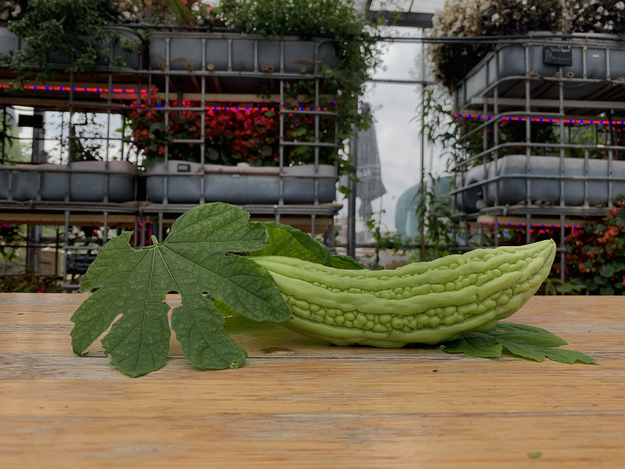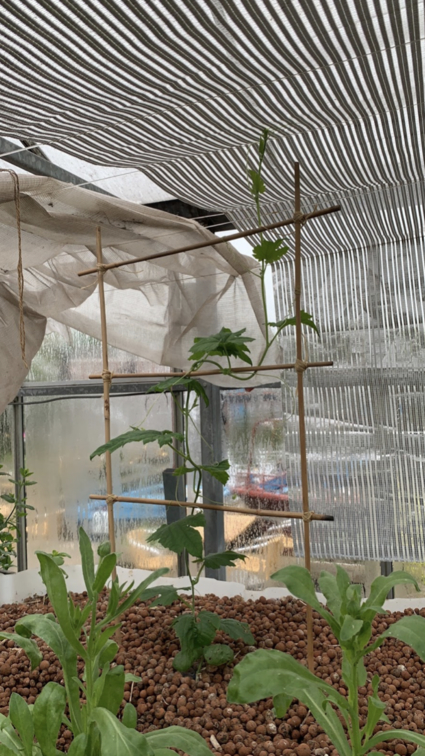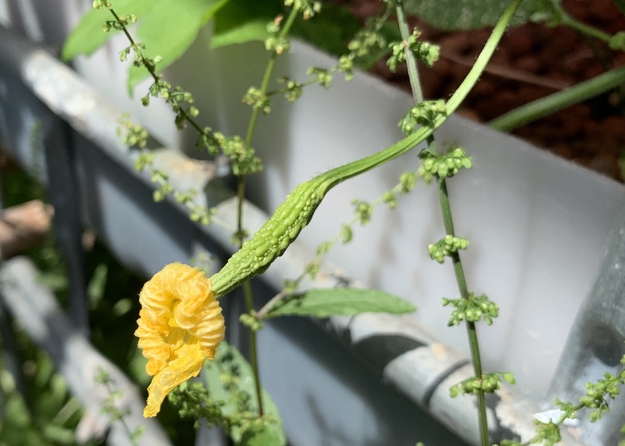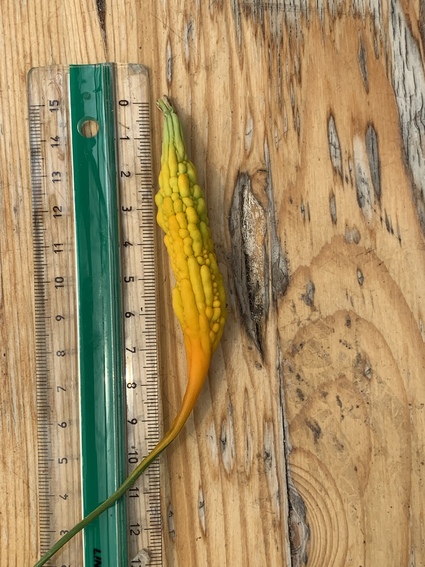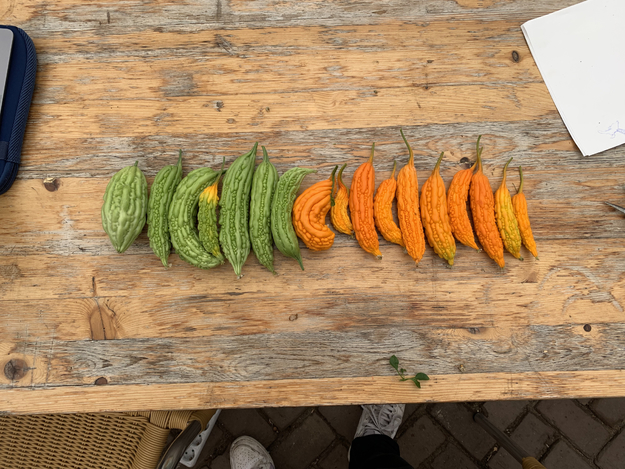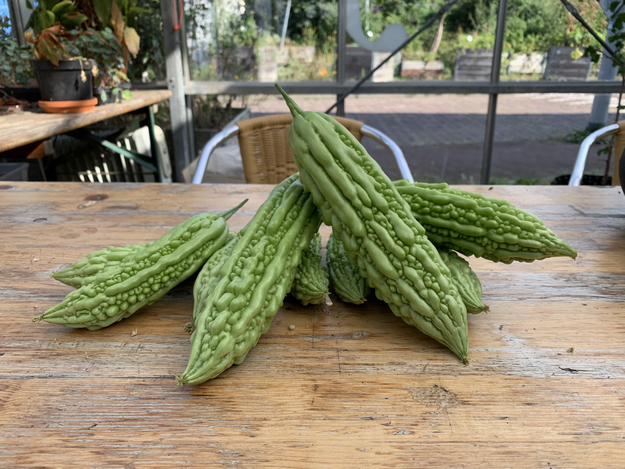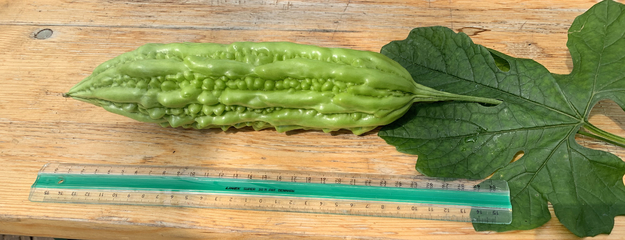Goya, Karela, Sopropo, Kho qua
This very bitter and bumpy fruit from the Cucurbitaceae family is prevalent in cultures and cuisines worldwide. In Suriname, it is known as Sopropo, Karela in India, Kho qua in Vietnam, and Goya in Japan. Although the varieties are slightly different, the species, taste and texture are more or less the same. Much like zucchini and cucumbers, this fruit is also eaten unripe since, with maturation, the numerous seeds inside become very hard, rendering it unpalatable and, in fact, poisonous. The only benefits of ripening are: First, the Karelas take on a fluorescent orange colour, and eventually, the fruit splits open to reveal the mature seeds, which at this point have a deep burgundy colour, which is beautiful to see. Secondly, the mature seeds can be used for the next crop cycle.
Growing Karela in our aquaponics system was not planned. Karin Senf from Campus Flevoland visited Mediamatic to share beers she had brewed, flavoured with Karelas grown in the Netherlands. Along with these beers, she also very kindly gifted us some seedlings of Karela plants that she had taken from the cultivator. The seedlings were in the soil, so we were not sure how they would respond to the change to hydroponics. Also, our system is rich in nitrogen which would help promote abundant leaf growth. The comparatively low proportion of Phosphorus and Potassium, the two macronutrients essential for producing sizeable fruits and flowers, led us to believe fruits would stay small. Nevertheless, the only way to investigate our hypothesis was to put it to the test!
10-meter vines
To minimise pH shock, the first step was to water the seedlings with gradually more acidic water until the roots were accustomed to the pH range found in our aquaponics system, 5.8-6.2. We then gently washed away the soil from the roots and inserted the seedling into our system. Karela belongs to the Cucurbitaceae (Gourd family), which means that the plant grows in large vines, spanning up to 10 meters long. My parents, who grow this vegetable in India, also recommended choosing a spot with a lot of light. Ultimately, I chose to use one of the top beds since it allowed the plants to hang down the side, receive lots of light and easily snake the creeper along with the greenhouse frame. The plant responded really well to this transition, exhibiting rapid growth. 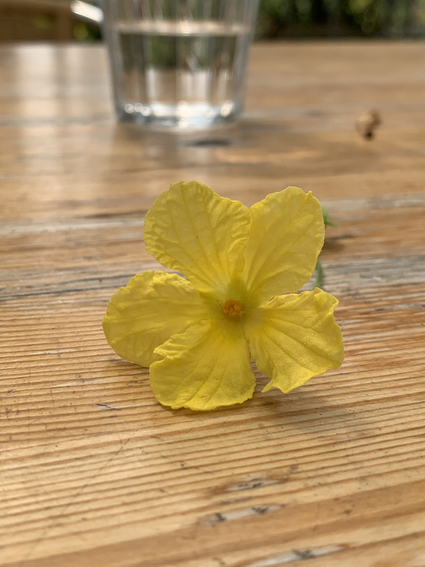
The sweet smell of Goya
45 days in, we began seeing buds that bloomed to reveal these beautiful yellow flowers. Surprisingly, Goya flowers have a sweet scent resembling a mix of jasmine and pumpkin. The start of flowering was not only exciting because of a new variety of edible flowers we could work with, but it also implies the arrival of fruits!
Initially, the plant was producing small fruits that would ripen very early, too; they ranged between 6 and 10cm, as shown above. We thought this was due to the low levels of phosphorus and potassium. But, in a light bulb moment, I thought back to orange and tomato cultivation, where larger fruits were obtained by removing some new shoots and training the plant to concentrate on a few prime vines. The streamlining technique worked like a dream; the plants began to crop heavily with constant pruning and training.
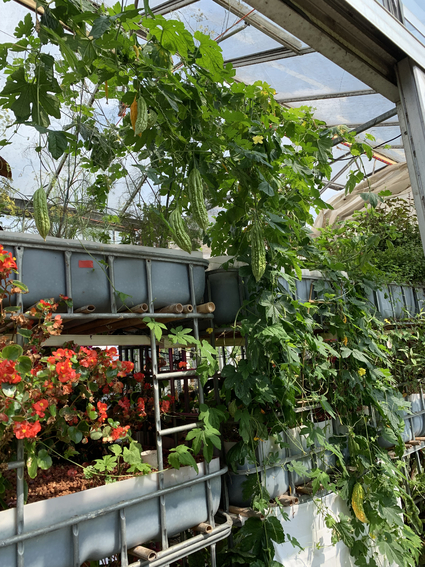
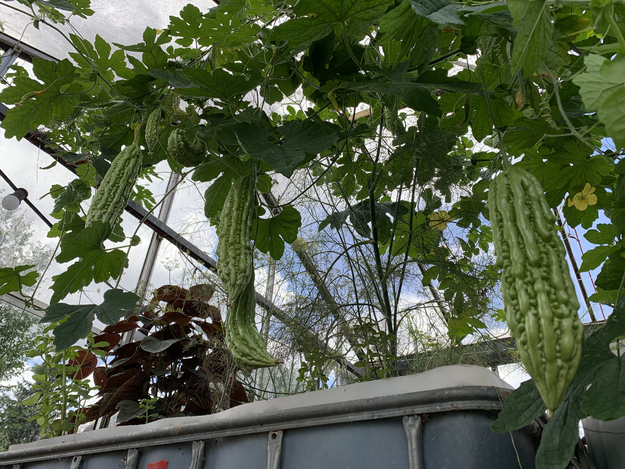
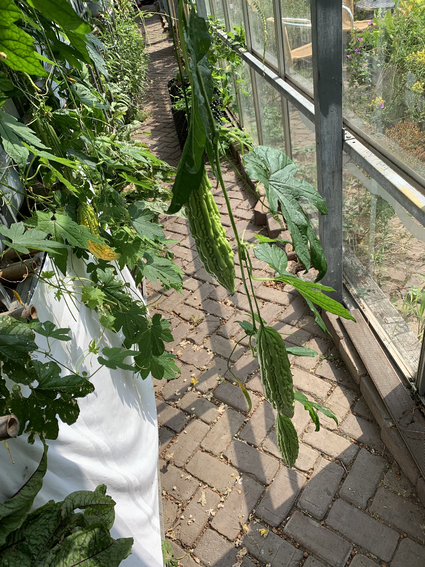
I imagine with the growing root system and thickening of the vines by the months of June and July; we began regularly harvesting large fruits, sometimes around a dozen at a time. The fruits are tight, flavourful and the seeds remain tender even in the larger fruits. I suspect that this is because of growing them in a hydroponic system where the nutrients can be uptaken directly by the root ball allowed for explosive growth before the ripening process began.
We hope to post our next blog post of the Karela series soon; this will mainly cover the various preparations for this fruit and what our Lunchtime guinea pigs thought of it! Hopefully, we can share the fruits of our labour with the public, too, once we reopen with a brand new bar later this month.
